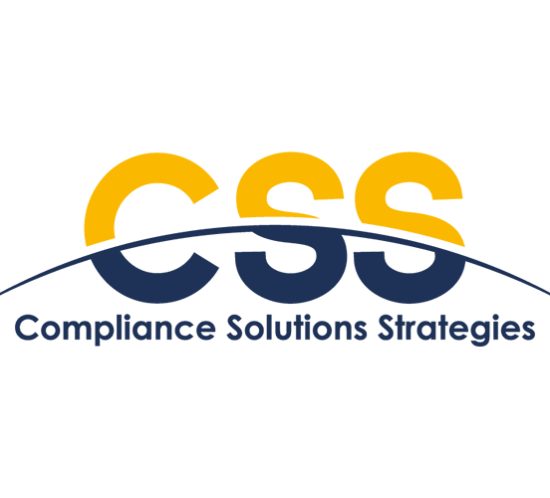ESMA Upcoming Milestones
Financial entities affected by EU law: Take note of ESMA’s handy summary of upcoming deadlines for submitting consultation feedback. Check it out here.
SEC Adopts the Changes in the Technical Specifications of Form N-CEN
On Monday, June 21, 2021, SEC adopted the changes in the Technical Specifications of the form N-CEN. All changes are part of XML schema definitions (XSD) that defines the N-CEN submissions. EDGAR Release 21.2 has introduced updates related to enumeration RELY_ON_RULE which now has two additional elements – “Rule 12d1-4 (17 CFR 270.12d1-4)” and “Section 12(d)(1)(G) of the Act (15 USC 80a-12(d)(1)(G))” – increasing total count to 13. Similarly, element UNIT_INVESTMENT_TRUST_TYPE has the following new elements – “isRule12D1Dash4Reliance” and “isRule12D1GReliance”.
More information about this can be found here.
Problems with PRIIPs KIDs
On Thursday 17 June 2021, the Belgian regulator (FSMA) issued a feedback statement (here) to PRIIPs manufacturers and distributors in Belgium warning them of issues they observed over a three-year review of KID documents used in the Belgian market. The statement concluded that “the KID is intended to be a useful document for investors” and that the “main objective of the PRIIP Regulation is to enable retail investors to compare products and to make an informed investment decision” however the FSMA found that the “way in which some manufacturers apply this legislation means that the KID does not always achieve a sufficiently high quality to achieve those objectives.” The statement of findings also called out differences between different market participants’ commitment in terms of energy and resource into drawing up the KIDs as they would into their marketing documents.
In fact, the FSMA study concluded that “the majority of the KIDs examined did not enable investors to be adequately informed of a product, its features or risks.” The FSMA has contacted each of the manufacturers where deficiencies were noted and have asked them to make the necessary changes to the KID documents. The FSMA further indicated it will continue to review the KIDS notified to it, and that it expects sustained effort on the part of the sector to improve the clarity and comprehensibility of these documents. Stayed tuned as the PRIIPs saga continues…
Let’s See All the Cards: Pre-Trade Monitoring and Position Limits
A recent advancement in position limit compliance encapsulates the term “RegTech” quite well. Pre-trade monitoring – tracking orders before they are executed and settled on markets, and often enabled within an investment manager’s OMS – is increasingly being leveraged as a technology that can be integrated into a regulatory monitoring system.
A platform for position limit regulations is an ideal candidate for this: such limits are usually a fixed position size that may not be exceeded, and therefore compliance is made easier in being able to see how accruing orders would affect a total position size (i.e. how near you may be to a position limit). In contrast to “post-trade” regimes such as major shareholder thresholds – which generally allow you to cross any threshold you like, as long as you then submit a disclosure – for the investment manager position limits are a game of Blackjack. You want the freedom to build up an aggregate position as much as your trading strategy demands, but in no circumstances do you want to exceed “21,” or whatever the position limit is for any particular security.
Taking the metaphor further (apologies, I’ve never been to Vegas and am making up for it here), the standard “post-trade” approach to position limits has required the investment manager to consider cards that are hidden and unknown. While the settled trades and aggregate position can be seen (the cards dealt face-up, and their total), unknown are the outstanding orders still in play (the face-down cards). Pre-trade monitoring solves this problem: all of your orders are viewable, and aggregated for a potential total position. In other words, because you see every card you can draw, you know precisely how to get as close as possible to your limit without exceeding it. This is important for the market player, whose profit margins ultimately may depend on this type of transparency.
Of course, pre-trade functionality does exist in an asset manager’s OMS (order management system), and tracking orders through an OMS has served many purposes for risk, compliance and other matters. But as my CSS colleague Mike Marmo, a product head with a strong OMS background, pointed out to me recently, in many respects an OMS is not sufficient for addressing certain regulatory regimes such as position limits. For one, the OMS would need to consider the position limit levels, so that a limit breach could be alerted to the investment manager. This would be particularly challenging given the nature of position limits, which apply to derivative contracts such as futures and options only during specified calendar periods (notably the “spot effective period,” as well as other times related to contract maturity). Additionally, an OMS attempting to handle position limit compliance would require additional translation capability, for certain reference data about exchange products subject to the limits.
Another aspect of position limits, that typical OMSs are not designed to accommodate, are the position calculations. These are very particular and vary not just by the regulator or exchange involved, but also according to the specific product held. Aggregation requirements for similar products, for example, often entail different “parent contract” codes, ratio adjustments and positive-negative correlations, across hundreds or thousands of different contracts on just one exchange. Some products, additionally, trigger a notional calculation of holdings for position limit purposes as the expiration of the contract nears (a “diminishing balance”), according to a particular formula.
Because typical OMSs are limited in such ways, the marketplace has recently witnessed a demand for position limit “pre-trade” functionality from regulatory platforms. Such regulatory applications, if robust enough, would already have in place a position limit rules engine, appropriate calculations, integration of reference data, and technical as well as regulatory support. To also handle the pre-trade function, for real-time monitoring, integrated API capability would then be required, to facilitate alerts to the relevant trader or portfolio manager.
Those technical aspectsare important for genuine pre-trade compliance. Some liberal uses of the term “pre-trade” refer in actuality to post-trade monitoring, that simply occurs more often (e.g. intraday position monitoring, reflecting transactions that have already been executed). While that represents an improvement over a once-a-day evaluation of positions, it still does not offer the investment manager with a window into its outstanding orders building up during the course of a trading day. To deliver real pre-trade capability, a regulatory monitoring platform is likely undergoing a substantial improvement project. Whether that platform rests in-house with an asset manager, or else outsourced through a vendor, pre-trade functionality therefore represents an investment in technology, and a market player’s bet that it will improve both regulatory compliance and investment decision-making.
Bitcoin Takeaways for Investment Advisers
We are witnessing the emergence of Bitcoin as a new (and growing) asset class among institutional investors – a rather rare and unique development in the investment world. So, what lies ahead for investment advisers?
Some Bitcoin Background:
First, what is Bitcoin? In short, Bitcoin is a decentralized digital currency, untethered to any sovereign currency, without a central bank or single administrator, that can be sent from user to user on the peer-to-peer bitcoin network without the need for intermediaries As an asset class, it continues to gain acceptance among investors. Why? With portfolio diversification becoming more challenging, Bitcoin has garnered more attention from institutional investors as an asset class to be seriously considered. Increasing market liquidity, improvements in custodial practices, a more favorable regulatory outlook and, of course, impressive long-term performance have driven institutional acceptance at a time when widespread concerns abound about monetary and fiscal policies driving inflationary expectations. A common theme among Bitcoin Conference attendees is that owning Bitcoin is an alternative to fiat currencies and an insurance policy against the perception that irresponsible government policies will continue to devalue traditional fiat currencies overtime, including the dollar.
Investment Adviser Perspectives:
How should investment advisers react? As a fiduciary, should investment advisers ignore Bitcoin as an overly risky alternative investment, despite the impressive long-term returns? Does Bitcoin fit into portfolios as a small portion of a balanced portfolio? Advisers are now grappling with these and other issues. Solutions? Some investment advisers are offering or planning to offer private funds to high net-worth and institutional investors to gain exposure to this asset class. Others are doing the same for retail clients. Some at the Bitcoin Conference believe that going all in on Bitcoin as an investment is the answer. Others take a very different view and believe that owning Bitcoin as part of a balanced portfolio is the best course to take. All agree that investors must understand the benefits and risks of investing in Bitcoin and have a high risk tolerance.
Like any other investments, prior to investing, it is critical for investment advisers to do their homework first, and conduct product due diligence on Bitcoin from an operational perspective by examining a host of supervisory and regulatory issues, including, but not limited to valuation, liquidity, trade execution, recordkeeping, custodial functions, and client know your customer onboarding processes and disclosures. Additionally, in the private fund space, having adequate governing fund document disclosures is of paramount importance. Taking a risk assessment view, all these issues must be carefully thought out, managed, documented in written policies and procedures, and supported by adequate oversight and recordkeeping. Of course, Form ADV disclosures regarding cryptocurrencies will also be a critical component of the regulatory disclosure landscape for all investment advisers.
SEC & Office of the Comptroller of the Currency (OCC) Regulatory Views:
As regulators, including the SEC, continue to address various concerns, such as custody, investment advisers and broker-dealers must monitor all forthcoming regulatory guidance, such SEC’s custody rule guidance, issued on December 23, 2020, which spelled out a regulatory framework that will function as a custody rule road map for broker-dealers, pursuant to which “special purpose” brokers may follow certain, specific measures and custody digital asset securities during a five-year program period without the risk of facing an enforcement action. The SEC defined a “special purpose broker-dealer”—one that “limit[s] its business to digital asset securities (to isolate risk) and [that has] policies and procedures to, among other things, assess a given digital asset security’s distributed ledger technology and protect the private keys necessary to transfer the digital asset security.” In the SEC’s December 23, 2020 statement, it also solicited comments on “evolving standards and best practices with respect to custody of digital asset securities.”
On the banking side of the custody equation, in its Interpretive Letter #1170 issued on July 22, 2020, the OCC issued a legal interpretation affirming that federally chartered banks and thrifts (collectively “national banks”) may now provide crypto custodial services for crypto assets.
Furthermore, in its Risk Alert, dated February 26, 2021, the SEC started that, “In the experience of the Division of Examinations (the “Division”), a number of activities related to the offer, sale, and trading of digital assets1 that are securities (“Digital Asset Securities”) present unique risks to investors. Moreover, distributed ledger technology has many distinct features that the Division encourages firms to consider when designing their regulatory compliance program. To address these risks and adapt as distributed ledger technologies change and mature, many market participants involved with Digital Asset Securities have been updating and enhancing their compliance practices.” The SEC’s Risk Alert went on to “provide observations made by Division staff during examinations of investment advisers, broker-dealers, and transfer agents regarding Digital Asset Securities that may assist firms in developing and enhancing their compliance practices. In addition, as more securities industry participants seek to engage in digital asset-related activities, this Risk Alert provides transparency about areas of focus for the Division’s future examinations.”
Finally, in comments made at CoinDesk’s Consensus 2021, (held virtually, May 24-27, 2021) SEC Commissioner Hester Peirce said, “The bottom line message I have is that we have work to do in modernizing our custody rules all across the board, As with many other areas, crypto may force us to do that modernization faster than we otherwise would.”
Stay Plugged In:
There’s no escaping the fact that we are witnessing evolutionary, transformative developments in the cryptocurrency marketplace. Key participants in this space, including investment advisers, broker-dealers, mutual funds, regulators, investors and the growing crypto ecosystem of crypto brokers/exchanges/service providers will all have a seat at this table and play a key role in moving these developments forward. Stay tuned for more regulatory developments, as we’ve only just begun.
Expanding Your Compliance Program – Trade Surveillance
Why should trade surveillance be a critical component of your compliance program? The short answer is that the devil is in the details of a firm’s trading. Reviewing trading can be a window into identifying conflicts of interest and a means of assessing the efficacy of a firm’s trading policies and procedures. It can also demonstrate your firm’s commitment to fulfilling its fiduciary duty in terms of both the duty of care and duty of loyalty. For example, trade analytics, or slicing and dicing trading data, can assist with identifying whether one client account is being favored over another. It can also be used to determine the quality of trade execution and transaction costs. Additionally, trade blotter data is a key element to identifying personal trading violations, such as front running.
Understanding the lifecycle of a trade serves as a foundation for appreciating how data analysis can be used to assess the effectiveness of a control and identify breaches of policies and procedures. The trading lifecycle is comprised of three (3) stages: pre-trade, trading and post-trade.
- Pre-trade Stage: This is the stage where research is conducted, ideas are generated, investment guidelines and restrictions are reviewed and order entry takes place. The risks associated with this stage include, but are not limited to, market abuse, insider trading, and prohibited or restricted transactions.
- Trading: At this stage of the process, order aggregation, trade sequencing, broker selection and trade execution take place. Account favoritism, side-by-side trading, the quality of broker execution can be evaluated through trading.
- Post-Trade: After a trade is executed, the post-trade activities include trade settlement, reconciliation, and final trade allocations. Risks present in these activities include fairness of allocations, account favoritism and prohibited transactions. The last stage of trading also provides an opportunity to review position levels and investment guideline compliance to determine guideline breaches, restricted transactions and if regulatory filings are required.
It is equally as important to understand the risk factors associated with trading. The chart below provides a summary of risks associated with certain trading activities and at what point in the trade cycle they are relevant. (It is by no means a comprehensive list as risks will vary depending on the instruments that your firm trades.)
| Risque | Examples | Pre-trade | Trading | Post-trade |
| Best Execution | -Broker Conflicts -Poor Execution -Transaction Cost Analysis (Equity, Fixed Income, FX) -Soft Dollars/Client Referrals | X | ||
| Side by Side Management | -Unfair Trade Sequencing -Order Aggregation -Trade Allocation -Cherry Picking | X | X | X |
| Market Abuse | -Wash Trading -Aggressive Short-Selling -Contract Based Market Manipulation | X | X | |
| Délit d'initié | -Aberrational Performance (Realized, Unrealized, Loss Avoidance) | X | ||
| Prohibited Transactions | -Window Dressing and Portfolio Pumping -Cross Trades -Rule 105 of Reg M -Style Drift -Guideline or Limit Breaches -Unreported Trade Errors | X | X | X |
Once the risks are identified, the next step is to develop a testing program. Post-trade testing enables you to identify individual trades that may violate a policy as well as identify trends, which over time may be problematic. The steps in developing an effective post-trade testing program are:
- Define the Data. A daily consolidated trade blotter is a starting point, as it shows all trades executed in client accounts. In addition, account positions, relevant benchmarks and historical price and volume data enable a more fulsome analysis. Position data provides cumulative information about holdings and can be used to calculate ownership percentages needed for regulatory filings. Benchmarks allow your firm to assess the quality of trade execution as does pricing.
- Define Target Activities. In other words, decide what you’re testing for. Define trading patterns and how to detect them. It is helpful to frame your tests in the form of simple questions, such as:
- “Show me instances in which trades in the same security were executed at different prices across different accounts.”
- “Show me all trades where there is a buy and sell transaction in the same account on the same day.”
- “Show me all cross trades.”
- Identify Thresholds for Testing. Think about what levels of activity are important for analysis or give rise to a potential conflict. For example, if you’re testing for short-term gains, consider instances in which a security was bought and sold for more than a 15% gain within 10 days.
- Develop the Data Model. Define the test criteria within your analysis tool to and load data to produce some sample output.
- Tune the Model. Initial expectations about data models often provide a significant number of false positives. Continue to refine the threshold criteria, account and trade populations, etc. to filter out the noise. One example may be to distinguish between trades based on model portfolio changes vs. trades related to individual account cash flows.
- Build Reports. Effective reports should convey the results of the analysis and evidence compliance with policies and procedures. Reports should reflect both individual trading activity and trends over time. Reports should be clear and understandable for the intended audience.
The ability to conduct such detailed reviews often is a question of resources. But it is also a question of expertise and independent oversight. Firms can accomplish conducting trade analytics in a number of ways. They can devote in-house resources to develop the skill set needed to evaluate trading data. In-house resources need to include systems or technology solutions in addition to qualified personnel. Ideally, in-house responsibility for trading analytics is vested with a person or team that is not associated with the trading function. This separation of duties provides for independent oversight.
Another option for firms is to engage an independent third-party, such as a compliance consulting firm, to conduct trade analytic reviews. The key to a successful engagement is to conduct due diligence of whoever you wish to engage. In particular, verify that they have a robust system for analyzing trading data and that the data that they require for a review is safeguarded. Also inquire as to the experience and skill set of the person or persons who will be analyzing the data. And lastly, clearly define the deliverables that your firm requires, such as the form and frequency of reports.
Trade analytics is an essential element of your firm’s compliance program. The testing and reviews that are conducted throughout a year can be used in your Rule 206(4)-7 annual review. And whether you conduct the reviews internally or utilize a third-party to expand your compliance resources, trade analytics is an important tool to evaluate the effectiveness of your policies and procedures and identify conflicts of interests.







